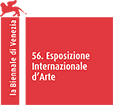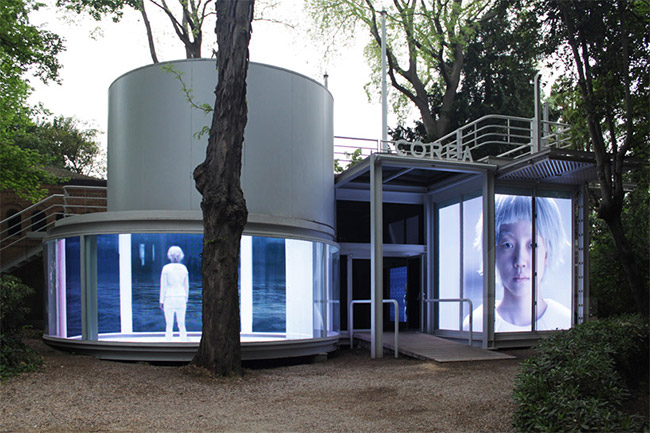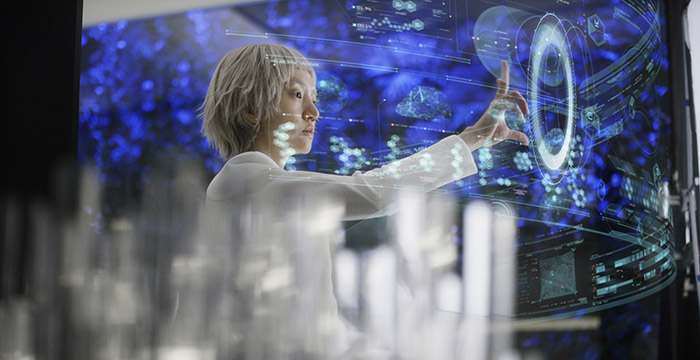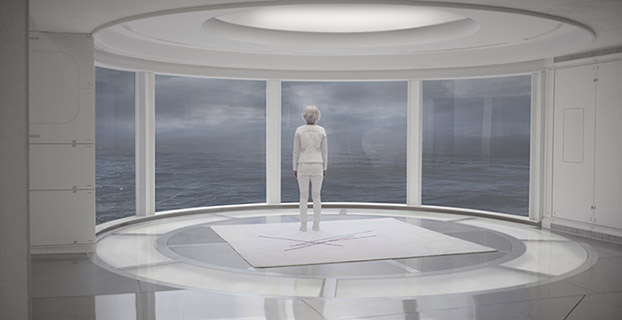 |
||||
|
||||
ARTEXT : La Biennale di Venezia
Moon Kyungwon & Jeon Joonho
I contributi artistici di Olaf Nicolai, Hito Steyerl, Tobias Zielony e del duo artistico composto
da Jasmina Metwaly & Philip Rizk trasformano il Padiglione della Germania 2015 in una
Fabrik, ovvero una fabbrica, una fucina, in cui le immagini producono loro stesse, senza
limitarsi a rappresentare la realtà, ma con l'intento di trasformarla.
 Korean Pavilion 56. Esposizione Internazionale d'Arte. The Ways of Folding Space & Flying
Korean Pavilion 56. Esposizione Internazionale d'Arte. The Ways of Folding Space & Flying On arts, life and the environment. A Pavillon for a new beginning We focused on two aspects when we worked on the project News From Nowhere in 2012: The restoration of contemporary art scene that we see as deformed and the study of the art's positive relationship with life. While engaging with various collaborators, the shared sentiment was that we should 'return to the beginning'. What could seem as a quite typical starting point provided, in fact, a crucial turning point for examining the current status and function of the arts. When the current value system is demolished, what would be the most important concern for an architect? What about fashion designers and artists? These questions and subsequent answers became the center of our project. The environmental crisis that we face on the Earth was a backdrop onto which we built our discussions. [.] What should be stressed is that our focus is not on the post-apocalyptic world. We merely set up the hypothetical situation of a new life after the apocalypse as a device to look at the present from a more objective perspective. Through the mirror that is the future, the setting enables us to break away from current value system and rethink things from the beginning in other words, it enables us to see ourselves more clearly. Art and the lab How is art defined, verified and expressed? These questions are explored in the lab that we made. This lab takes the position from which it looks back on art with self-reflection and reexamine the overtly production-focused art world. Art and the social system Art with its fluidity is meant to confront social systems and powers. Art is about un-familiarizing the familiar and finding new elements from the process, which propels one to reflect on the conditions inside one's 'safety zone' and raise questions on the meaning and reason for existence. Questioning leads to new attitudes and behaviors. The reason how and why art has persisted throughout the history of human civilization lies in its power to transform an individual consciousness to a collective consciousness, where there is room for diversity and the expression of free will. Art and the social system Our film is set in the near future and it is rather based on various scientific developments that is taking place in reality right now. The main character (we want to leave the gender ambiguous but will refer to it as he) in the film was created from an optogenetics experiment. All of his thoughts and actions are transmitted and controlled through the biolite signals connected to his brain. This technology was inspired by the optogenetics experiments and studies that are successfully being carried out at MIT. In brain science, it is said that everything, including our ego, is something that our brain subjectively perceives, constructs and stores. So strictly speaking, there is no such thing as a singular reality that we often refer to. Scientists predict that the studies of optogenetics will be applied to people in the near future to convert electromagnetic signals from our brains into light signals so that our thoughts, perceptions and even our actions can be read and communicated. Based on this premise, we wanted to think about how our life will change and how art will evolve in such environment. On the collaboration with Toyo Ito Earthquake and tsunami devastated Tohoku area of Japan on March 11, 2011. It was a disaster that took many human lives and destroyed all the existing infrastructures. It made us realize that human civilization and progress that we strive for are insignificant efforts when seen against Mother Nature. Toyo Ito went to the radiation-contaminated area that people tried to keep away from, gathered the fallen trees and built the communal housing for the disaster-stricken residents called "Home for All". His voluntary efforts mobilized other architects and together they started joint projects for the disaster-stricken people. At this communal house, people could console and encourage one another to gradually overcome the grief. From Toyo Ito's practice, we were able to find an example of the social function and role of art that we had been searching for. After that, together with Toyo Ito, we started a community design project called "Mind Shelter" for communities starting out again in the disaster-hit areas.  The Ways of Folding Space & Flying, 2015, HD Film Installation, 10' 30''
The Ways of Folding Space & Flying, 2015, HD Film Installation, 10' 30''Curatori : Sook-Kyung Lee Commissioner: Sook-Kyung Lee.
Web site: http://www.koreanpavilion2015.com/ |
||||
Artext © 2015 |
